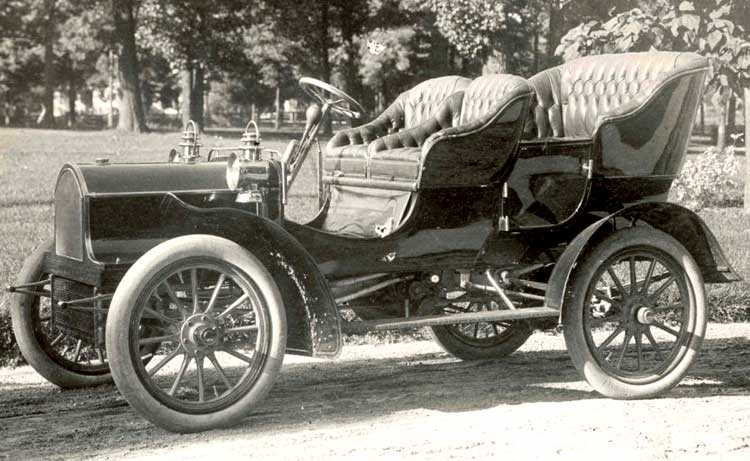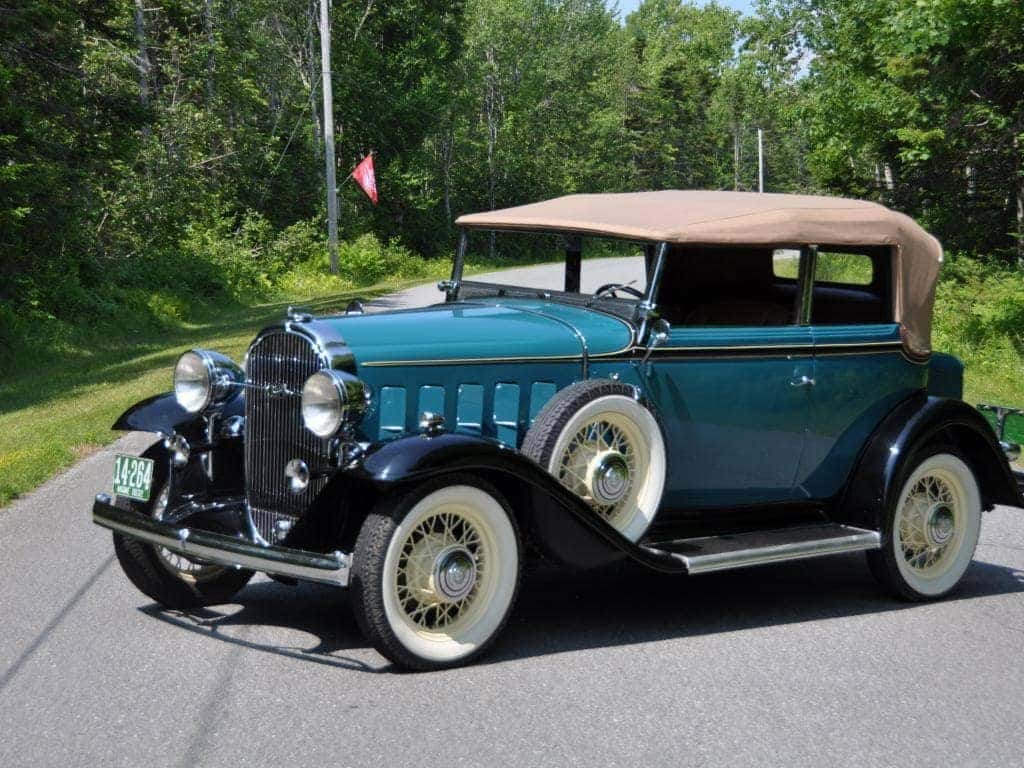
The holidays are fast approaching, a time during which we toast the upcoming year and celebrate all the hard work that went into the previous one. As we do every year at Rick Bokman Buick GMC Cadillac, we’re celebrating another year of servicing the best customers in Olean – though we may need save the top-shelf champagne for next winter. That’s when Buick will be commemorating its 125th anniversary.
Buick was founded in December of 1899 by the Scottish-born American inventor David Dunbar Buick. Following the dissolution of Oldsmobile in 2004, Buick took over the title of oldest surviving carmaker in America. (Although Henry Ford produced his first car in 1896, he didn’t officially found the Ford Motor Company until 1903). Throughout that time, Buick transformed from a small operation – one only marginally interested in producing automobiles – into one of the most respected and renowned auto makers on the planet.
Let’s take a brief trip through the history of Buick, a company whose accomplishments span three centuries.
Humble Beginnings & Fast Growth: 1899-1908
When David Buick founded the company in in Jackson, Michigan in 1899, he dubbed it the “Buick Auto-Vim and Power Company.” Initially, Buick intended to continue his production of stationary and marine engines. It was Walter Marr, Buick’s chief engineer at the time, who created Buick’s first automobile. Frustrated with David’s reluctance to fully embrace automobile production, Marr left Buick in 1901 to start his own company. (He would be rehired by Buick in 1904).
Marr’s replacement was Eugene Richard, who in 1902 filed a patent for a revolutionary overhead valve engine. With Richard in tow, David Buick slowly but surely became a convert to the potential of the automobile market. 37 automobiles were produced during Buick’s first year – a number that would rise to 750 by 1905.

In 1903, just as its cars were starting to gain widespread notice, Buick was incorporated as the Buick Motor Company. In 1904, the patent was approved for Eugene Richard’s overhead valve engine, whose innovative design is still used to this day. Still, as with any young company, Buick faced its share of financial hardships.
To help remedy this, David Buick recruited William Durant, owner of Durant-Dort Carriage Co., the country’s leading producer in horse-drawn vehicle production. When demand for Buick’s vehicles eventually outpaced the amount of cars the company was able to manufacture, Durant helped move the company to Flint, Michigan – the base of operations for James H. Whiting, chief Buick financier.
Thanks to the relocation, Buick was able to accommodate the ever-growing demand. By 1908, the Buick’s production numbers ballooned from 750 in 1905 to over 8,800. Buick had begun outpacing big-name rival competitors Oldsmobile and Ford, who were no doubt startled by their remarkably swift rise. Buick added to their growing legend in 1906, when they became the only car brand to complete a thousand-mile relay race from Chicago to New York. Meanwhile, that same year, William Durant would create a modest holding company by the name of General Motors.
Highs & Lows During Great Depression & World War II: 1926 – 1945
In the decades that followed, Buicks became the preferred vehicle of world leaders and other prominent figures across the globe. It became known as a prestige brand within the Republic of China, its vehicles ordered and driven by high-level politicians and even the Emperor himself. Buick opened its first international sales office in Shanghai in 1929, and to this day, Buick sells 80% of its production in China.

Buick production would fluctuate throughout the uncertain days of the 1930’s and 40’s. By the end of 1926, Buick was building a record 260,000 units a year. But by 1933, at the height of the Great Depression, only 40,000 total cars were produced. Like so much of the country, Buick was forced to become crafty to survive. They proceeded to roll out the Series 40, the most affordable Buick to date at just $865 (about $18,000 today, adjusted for inflation). Its runaway success paved the way for other popular models like the Century and Limited, and by 1936, annual production had already returned to the 200,000-unit mark.
Buick would turn its primary focus towards aircraft engine production during World War II, but they’d continue innovating their auto designs. In 1939 Buick became the first company to include turn signals on their cars (which rivals wouldn’t replicate for another decade), and the famous grille introduced in 1942 replaced the thin vertical bars with substantially thicker three-dimensional bars set behind the bumper.
A Refined Journey: The 1950’s to Today
When another economic recession arrived in the late 1950’s, Buick was prepared. Once again, they were able to withstand a lull in production numbers and released several exciting new models. Some of the most iconic Buick models were introduced during the 50’s and 60’s, including the Skylark and Riviera.
By the time the ‘70s rolled around, Buick had established itself as a brand intrinsically recognized for style and performance design. Perhaps it was Edward VIII purchasing a Buick to escort British royalty back in 1939, but Buick had successfully positioned itself as American royalty – and they were showcasing it at every available opportunity.
Today, we still associate the name Buick with luxury and sophistication. Buick has only honed its designs in recent years, outfitting each of their vehicles with the latest in modern comfort: leather seating, chrome trim, and the latest technologies. The result of this commitment to refinement? In 2015, Buick sold a company record one million cars.
As Buick’s 125th anniversary approaches, there’s never been a better time to visit Rick Bokman Buick GMC Cadillac. Whether your vehicle needs an oil change, battery diagnosis, or brake service, our Service Department has you covered. Check out our full inventory of new and pre-owned Buicks, and get yourself behind the wheel of one today. Drive into the future with the auto maker who has, for 124 years running, reliably navigated through our country’s past.






